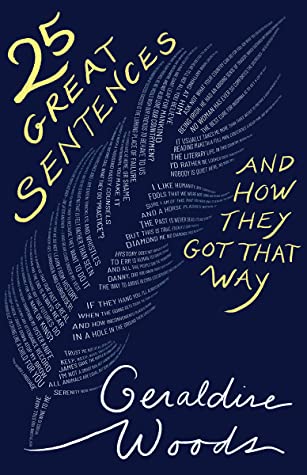
25 Great Sentences and How They Got That Way
کتاب های مرتبط
- اطلاعات
- نقد و بررسی
- دیدگاه کاربران
نقد و بررسی

May 11, 2020
This handy, practical guide prompts would-be writers to think critically about how to create effective and meaningful sentences. Woods (Grammar for Dummies), former director of the Horace Mann School’s Independent Study program, selects examples from novelists (Toni Morrison, Ann Beattie), journalists (Red Smith), poets (Martín Espada), and public figures (Neil Armstrong, JFK). She opens each chapter with one of the promised “25 great sentences,” providing a brief analysis of how it illustrates a certain literary device and then additional example sentences to reinforce her point. These include parallelism in Li-Young Lee’s poem “From Blossoms,” shifting word meaning in Joyce’s Ulysses (“Love loves to love love”), and onomatopoeia in Watty Piper’s The Little Engine That Could. Woods’s selections mix classroom staples (Romeo and Juliet) and contemporary classics (Ta-Nehisi Coates’s Between the World and Me), and she also displays a winning enthusiasm for language, as when she illustrates the coinage of new words with Phil Rizzuto’s invention of the verb nonchalanting, or provides a sidebar on the tangled etymology of the word beatnik. This volume should be helpful for students, and older readers will recall memories of favorite English teachers leading them through the intricacies of writing. Agent: Carol Collins.

May 15, 2020
A self-described "language enthusiast" analyzes memorable sentences. Woods, author of English Grammar for Dummies, among dozens of other books on writing and literature, offers an upbeat, informative guide for writers and readers, focused on the power of sentences. Each of the 25 chapters highlights one exemplary sentence, supplemented by many others that illustrate the same technique, drawn from a capacious range of sources, including Virginia Woolf, Stephen King, Dylan Thomas, Bob Dylan, the King James Bible, and even ads for potato chips, candy, and soda. Woods avoids literary jargon and carefully explains terms that might be unfamiliar to nonspecialist readers. Looking at structure, for example, she identifies several interesting constructions--parallelism, reversed sentences, questions, for example--and "crossed sentences," which she calls "the neon signs of the sentence world. They attract attention." Her primary example is John F. Kennedy's "Ask not what your country can do for you, ask what you can do for your country," and she also cites Groucho Marx: "Money will not make you happy, and happy will not make you money." Some sentences, notes the author, succeed through surprise, such as Lucille Ball's "The secret to staying young is to live honestly, eat slowly, and lie about your age." A section on diction examines verbs, tone, word shifts (Gertrude Stein's "There is no there there" is one example), and inventive coinage. Poetry appears most frequently in chapters on sound (onomatopoeia, repetition, and matching sounds) and visual presentation. A section on connection/comparison analyzes use of the first person and second person, synesthesia, and contrast--e.g., Neil Armstrong's famous "That's one small step for a man, one giant leap for mankind." A final section on "Extremes" focuses on unusually long "marathon sentences" and sentences that are marvels of concision, such as E.M. Forster's "Only connect." Each chapter ends with inventive writing exercises. A practical, nonboring companion for writers aiming to hone their style.
COPYRIGHT(2020) Kirkus Reviews, ALL RIGHTS RESERVED.

























دیدگاه کاربران